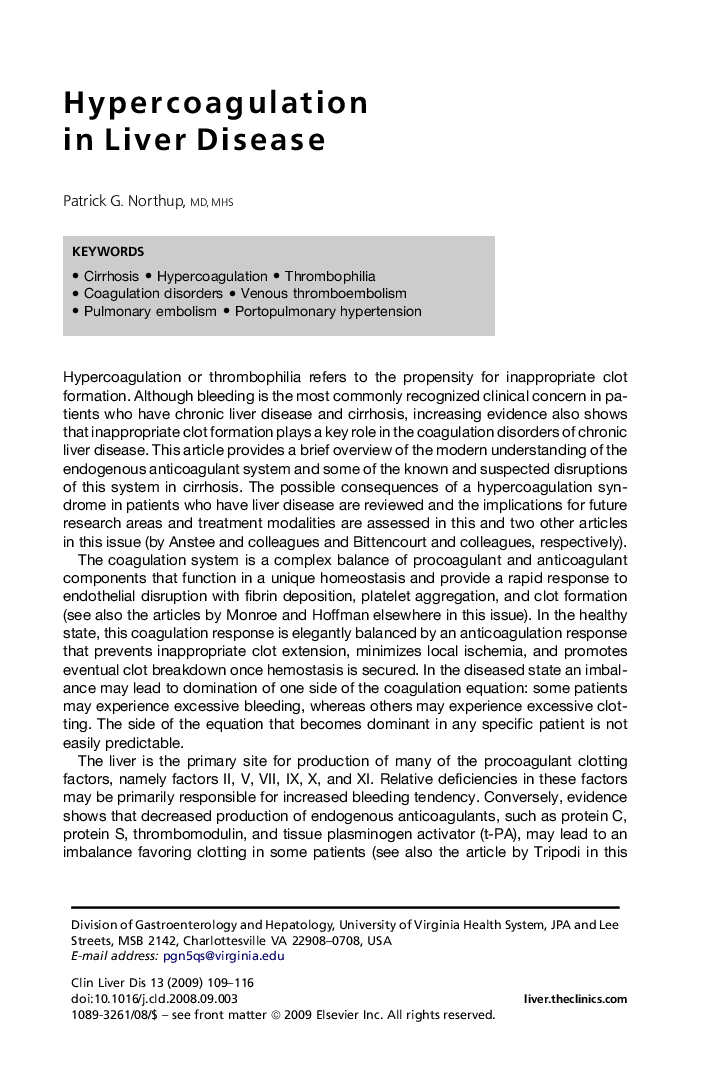| Article ID | Journal | Published Year | Pages | File Type |
|---|---|---|---|---|
| 3461514 | Clinics in Liver Disease | 2009 | 8 Pages |
Abstract
The coagulopathy of liver disease is complex and often unpredictable. Despite clear evidence of an increased tendency for bleeding in patients who have cirrhosis, many circumstances also promote local and systemic hypercoagulable states. The consequences of hypercoagulability include the obvious morbidity and mortality of portal vein thrombosis, deep vein thrombosis, and pulmonary embolism, but possibly also include other end-organ syndromes, such as portopulmonary hypertension, hepatorenal syndrome, and spontaneous bacterial peritonitis. A more subtle contribution also could be responsible for progression of early fibrosis to decompensated cirrhosis. Future research is needed to elucidate specific mechanistic pathways that might lead to local hypercoagulation and the clinical interventions that might prevent morbidity and mortality related to hypercoagulation in patients who have cirrhosis.
Keywords
Related Topics
Health Sciences
Medicine and Dentistry
Medicine and Dentistry (General)
Authors
Patrick G. MD, MHS,
